The Definitive Guide to Watch Sizes
How to Find the Perfect Watch for Your Wrist
Try the calculator below, or jump to one of these sections:
Watch Size Calculator
Here’s how to use the calculator:
Step 1: Choose inches or centimeters
Step 2: Enter your wrist size
Step 3: View your results*
Your results will automatically appear when you enter your wrist size.
*I know, I know…lug to lug is just as important as case diameter (or more important, according to some people). But case diameter is ubiquitous and easy to find, so it’ll always be the primary way to gauge the size of a watch.
Interpreting Your Results
Instead of giving you an exact watch size, the above calculator gives you a range.
Think of this as a safe zone. You’ll look good wearing any watches that fall between your minimum and maximum dimensions.
I created the calculator in this way because, frankly, watch size is highly subjective. It depends on personal the style of watch you’re wearing, trends, and above all, personal preference.
When it comes to wearing watches, the biggest mistake I see people make is wearing watches that are too big.
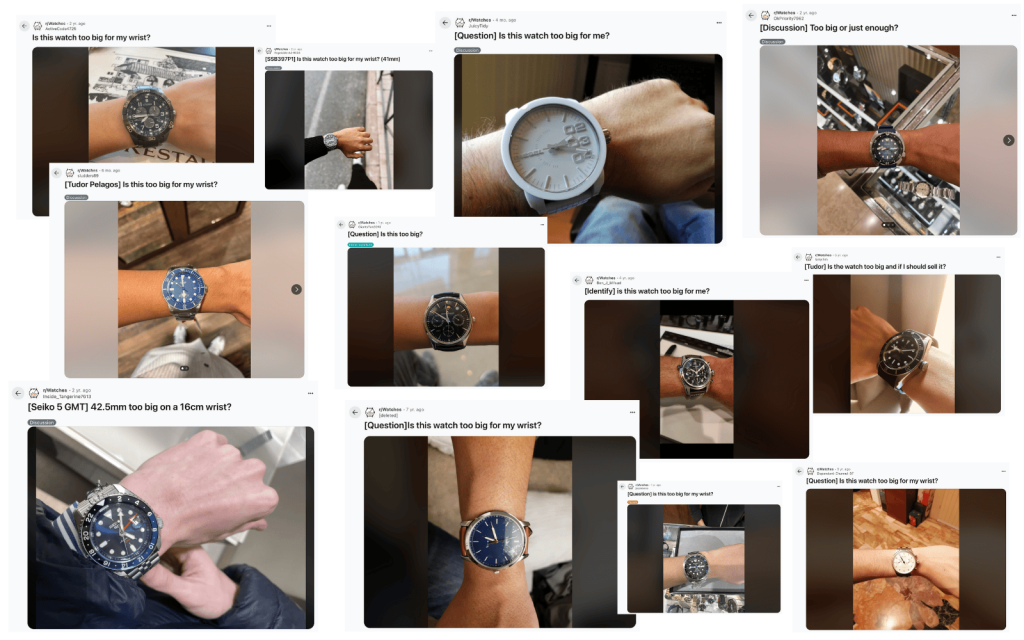
As long as you don’t wear a watch larger than your maximum calculated results, you won’t make this mistake.
Your minimum sizes are great for watches that are inherently smaller – dress watches, vintage watches and field watches.
Your maximum sizes are great for watches that are inherently larger – divers, pilot watches and tactical/digital watches.
How to Measure Your Wrist
To determine your ideal watch size, you need to know how big (or small) your wrist is. Specifically, you need to know the circumference of your wrist.
Figuring out your wrist size is very easy: you just have to measure your wrist (duh).
This probably goes without saying, but you should measure whichever wrist you wear your watch on (usually the left wrist), as there can be slight size differences between each side.
With a Soft Measuring Tape
The best way to measure your wrist is to use a soft measuring tape. This is commonly referred as tailor’s tape because it’s used by clothiers to measure different parts of people’s bodies.
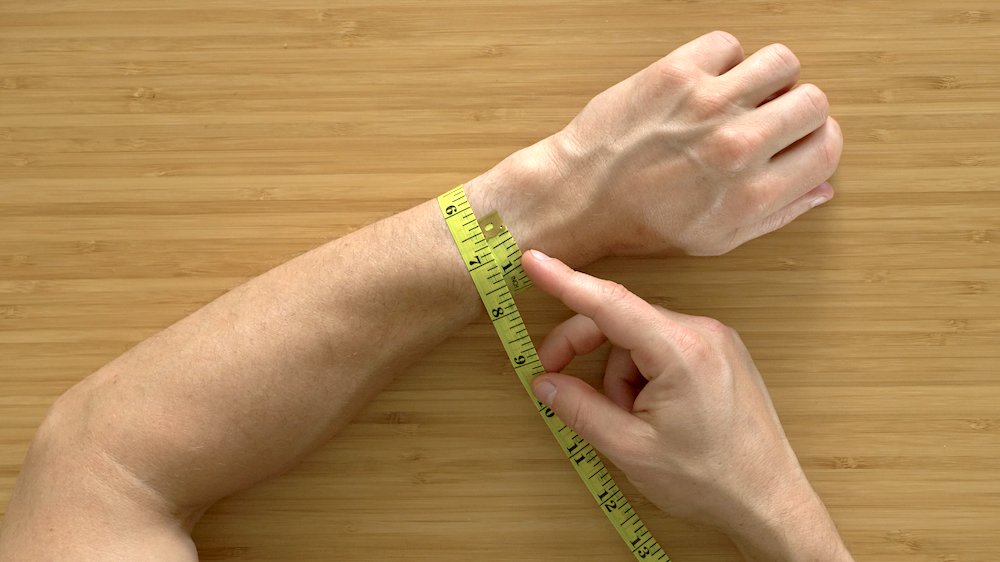
You might have some tailor’s tape lying around inside a suit bag or junk drawer, but if not, no worries…there’s another way.
Without a Soft Measuring Tape
Just grab a strip of paper or string, and wrap that around your wrist instead. Mark the spot where the end of the paper/string lands, then lay your makeshift measuring tape down flat.
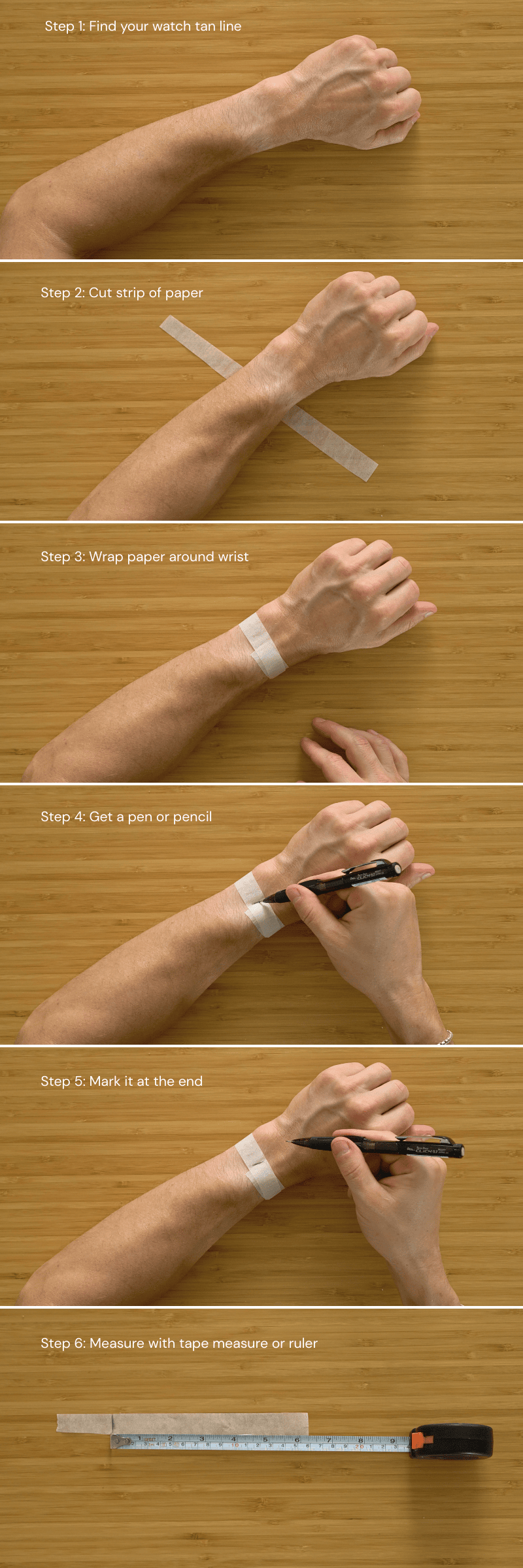
Use a ruler or rigid measuring tape to figure out how long the paper/string is. This is the circumference of your wrist.
Of course, circumference is just one measurement. Some people have wide, flat wrists. Others have narrow, round wrists.
But you don’t have to overthink this. Just measure your wrist’s circumference, then plug this number into the Watch Size Calculator above to figure out how big (or small) your watches should be.
Watch Sizes Explained
The most common way to describe the size of a watch is with the diameter of the case.
This measurement is so widely used that it’s often included in the actual name and/or model number of the watch.
But what is the case diameter?
Case Diameter
This is the distance from across the watch case, from one end to the other. It’s almost always listed in millimeters, as watches are relatively small objects.
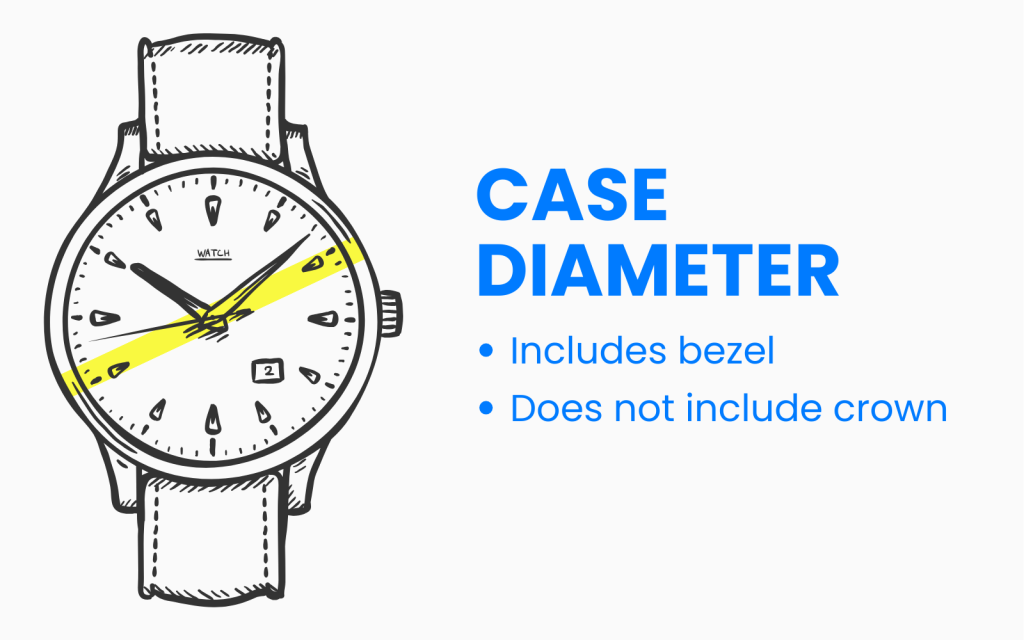
Case diameter is to watches what chest circumference is to suit jackets. It’s just the most universal and useful measurement we have.
But it’s not the only one…
Watches are multifaceted, three dimensional objects that come in all different shapes and sizes. While the case diameter will always give you a pretty good idea about the size of a watch, it’s not a perfect measurement.
In fact, case diameter can sometimes be misleading. This is why you’ll often hear people say things like, “It’s a 38mm watch but wears more like a 40mm.”
This means that, for this specific watch, attributes other than case diameter make it feel or appear bigger.
Let’s look at some of these other dimensions…
Lug to Lug
Lug to lug, also called lug height, is the distance from the “top” of a watch to the “bottom” of a watch (from the tip of the top set of lugs to the tip of bottom set of lugs).
Some argue that lug height is even more important than case diameter since it represents the total height/length of a watch.
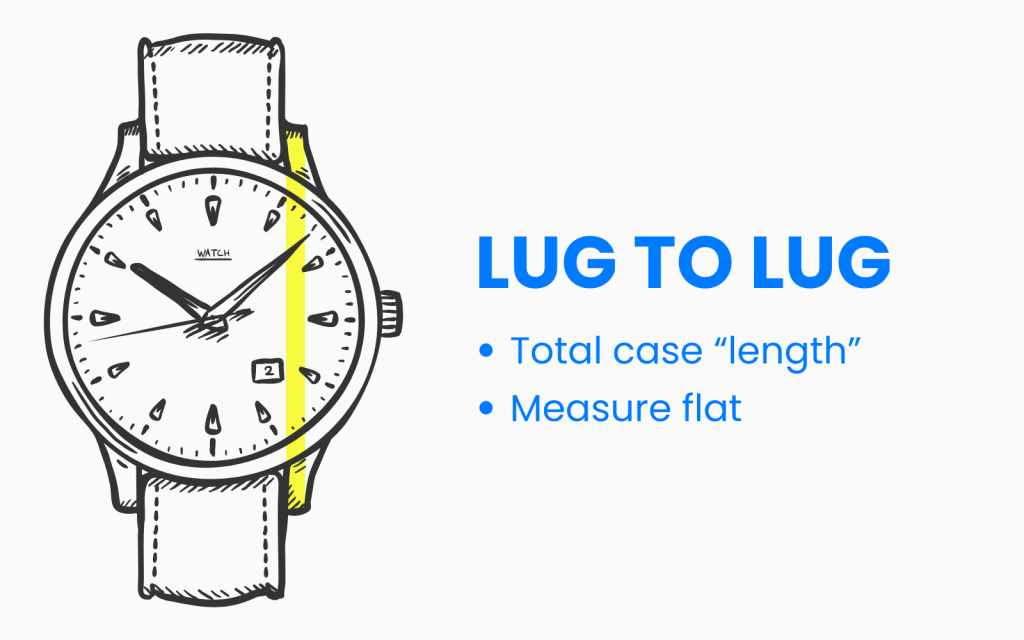
Regardless, conventional wisdom says that your watch’s lugs shouldn’t extend beyond the ends of your wrist.
In other words, there shouldn’t be any overhang caused by the lug height being greater than the distance across the across the top of your wrist.
This is really only an issue for guys with smaller wrists. Some watches have a notoriously long lug to lug, in proportion to their case diameter.
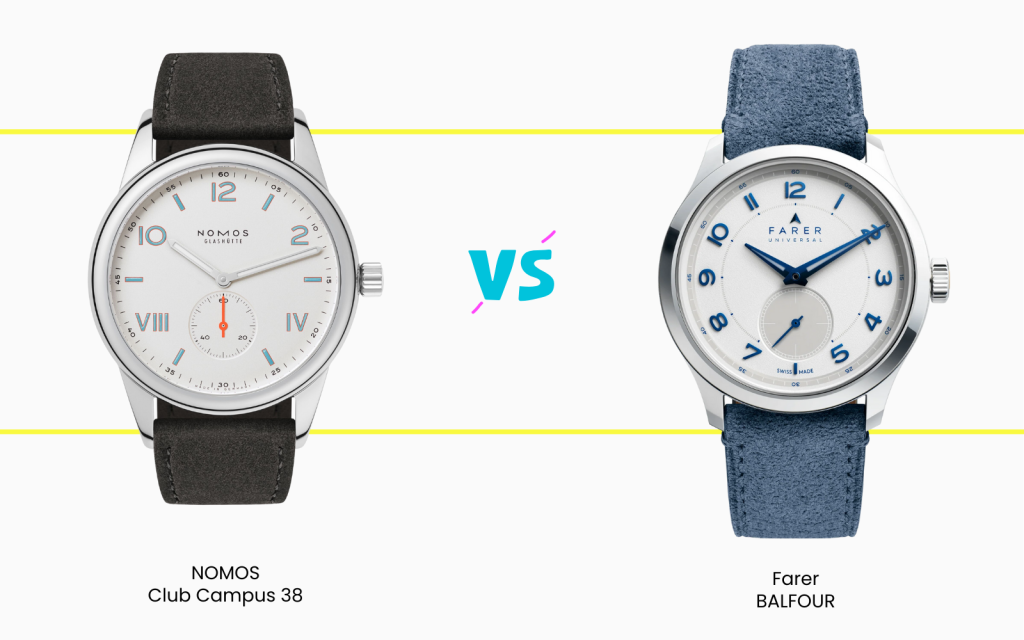
For example, the Hamilton Field Officer Khaki Mechanical is a 38mm watch, but its lug height is 46mm.
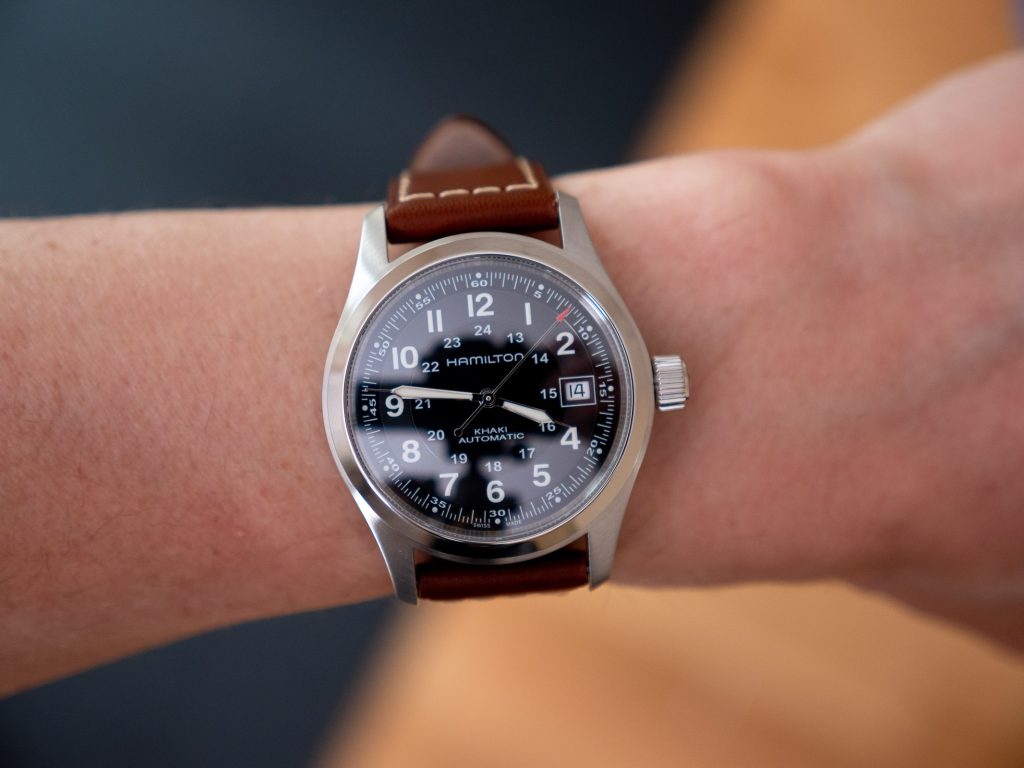
On the other hand, a large dial watch with a short lug height will seem smaller in real life than it does on paper.
Lug Width
Lug width is the distance between two lugs on the same end of a watch. Lug width is synonymous with band width.
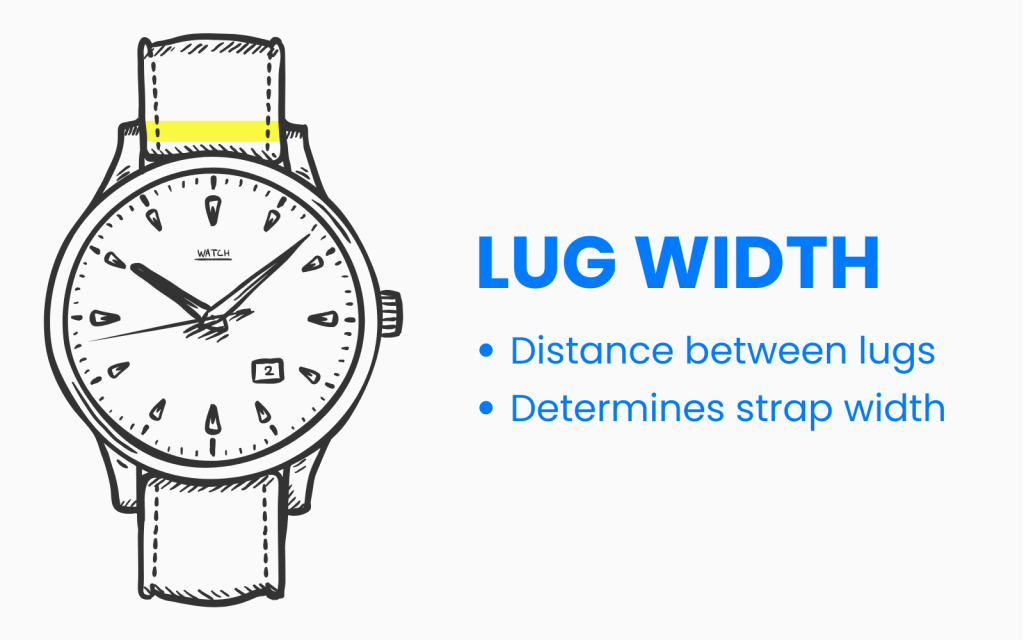
On other words, a watch with a lug width of 18mm will have an 18mm wide strap, band or bracelet.
For this reason, it’s important to know the lug width of your watch when you’re shopping for a new strap.
Keep in mind, many straps have a tapered shape to them, which means they get narrower toward the ends. The lug end of these straps still needs to match the lug width of your watch.
In general, chunkier and sportier watches will have wider lug widths, while dressier watches will have narrower lug widths.
Case Thickness
Case thickness, also called case height, determines how chunky or bulky your watch looks and feels on your wrist.
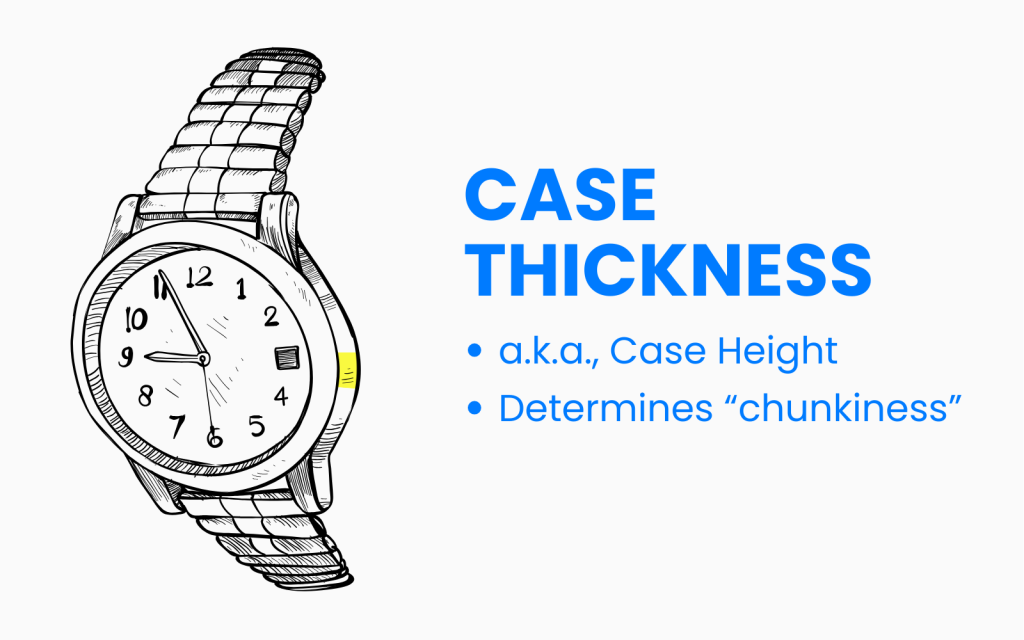
A watch with a thicker case won’t slide as easily under the sleeve or cuff of your shirt, which is why dress watches usually have very thin cases.
Case thickness is often dictated by the inner workings of a watch, especially for mechanical timepieces.
If a watch is powered by an automatic movement that includes multiple complications (date window, chronograph, etc.), the movement inside the watch will be more involved and therefor thicker.
In contrast, a battery powered (quartz) movement can be housed in an extremely thin case.
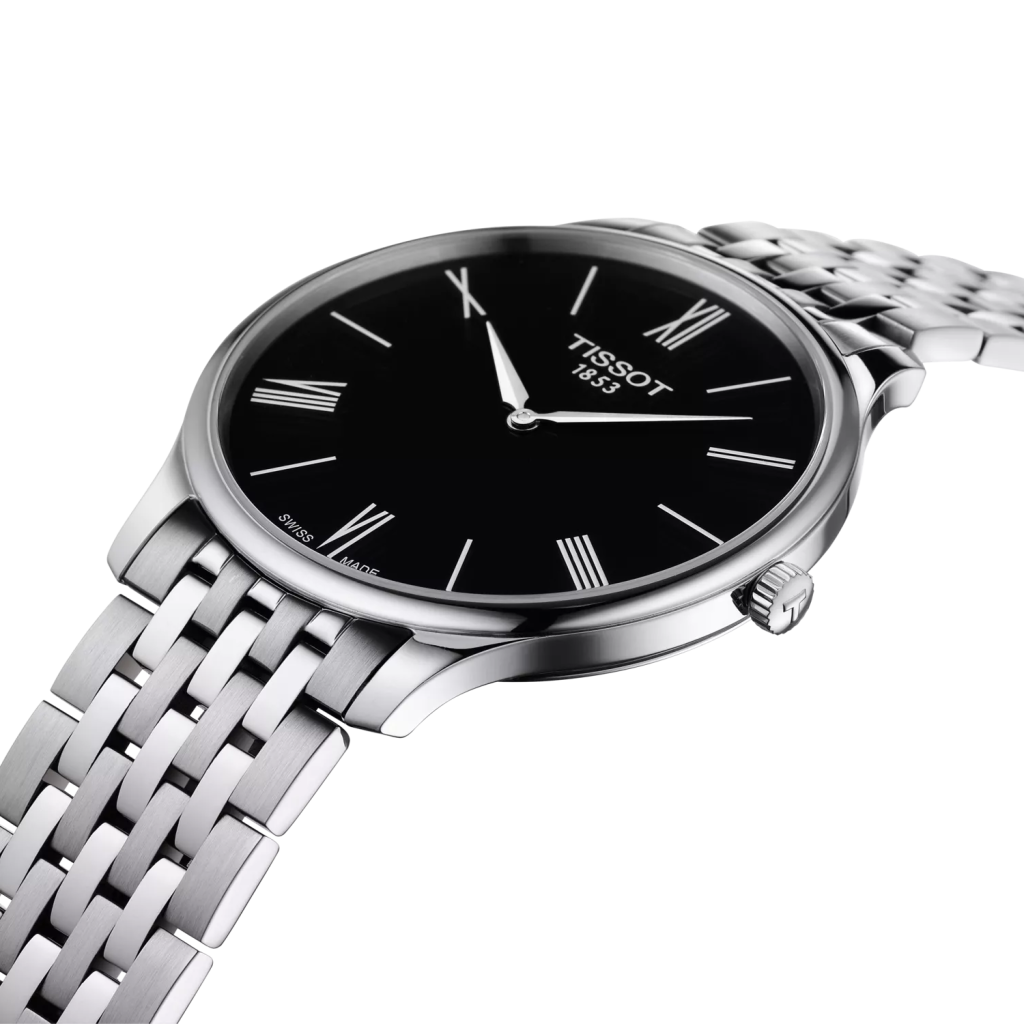
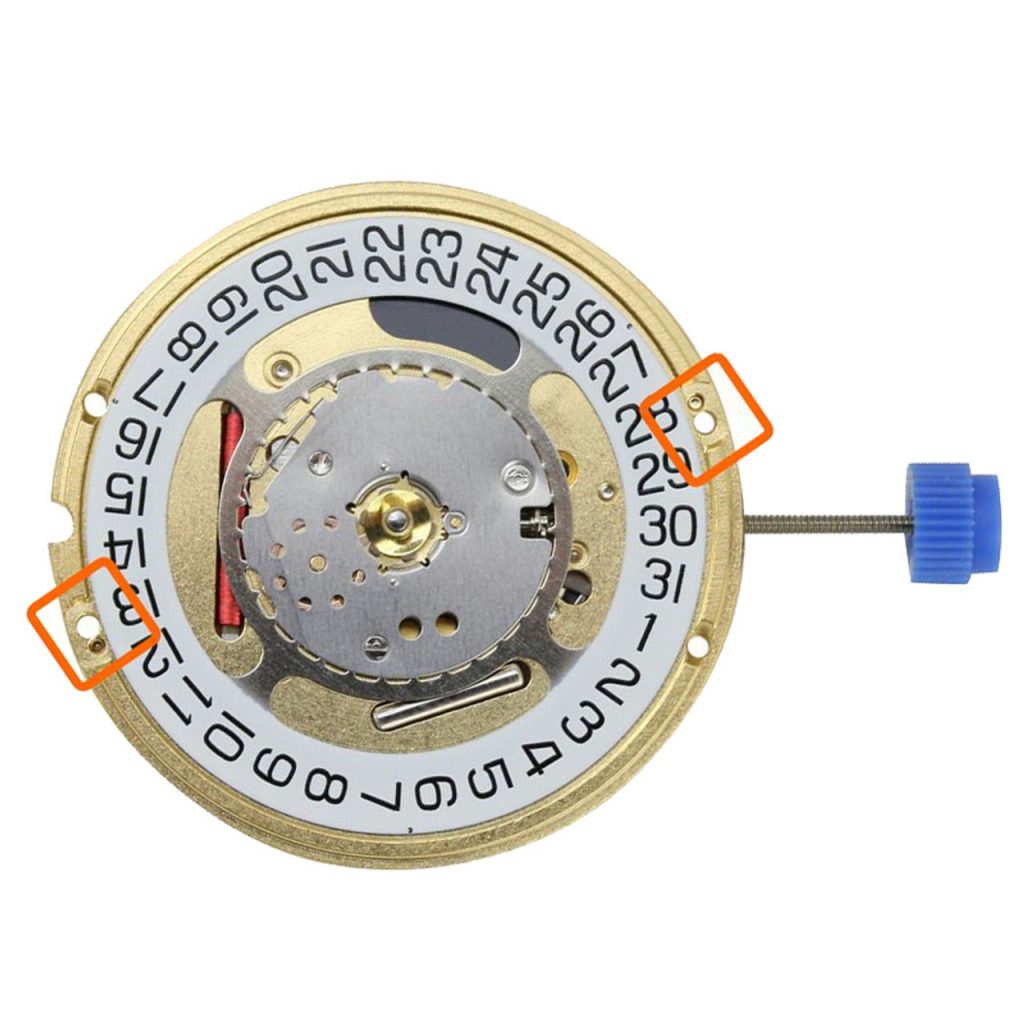
This is why some people opt for quartz or hand-wound mechanical movements over automatic movements. The latter typical need thicker cases to accommodate the more complicated “engine” of the watch.
That said, there are plenty of intricate automatic watches with thin cases, but these tend to be more expensive, as it takes a lot of expertise and craftsmanship to make this possible.
Dial Diameter
Finally, I wanted to touch on dial diameter. It’s not as important as overall case diameter, but it’s still worth knowing about.
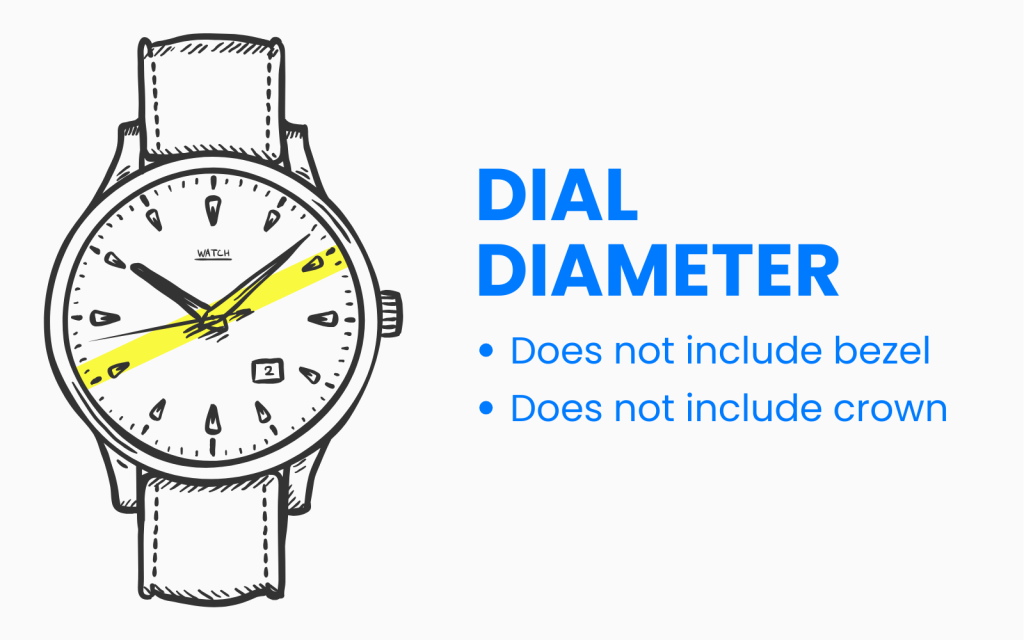
A watch’s dial is housed inside the case, underneath a pane of glass (or plastic). While many people unknowingly use the terms “case” and “dial” interchangeably, they’re actually two different things.
The dial is smaller than the case because it lives inside the case and is surrounded by a bezel.
For example, a dive watch might have a 42mm case, but the dial is actually just 38mm, and there’s a 4mm bezel.
If a watch has a small dial, compared to its case, it’s going to look smaller. If it has a large dial and thin bezel, it’s going to look bigger.
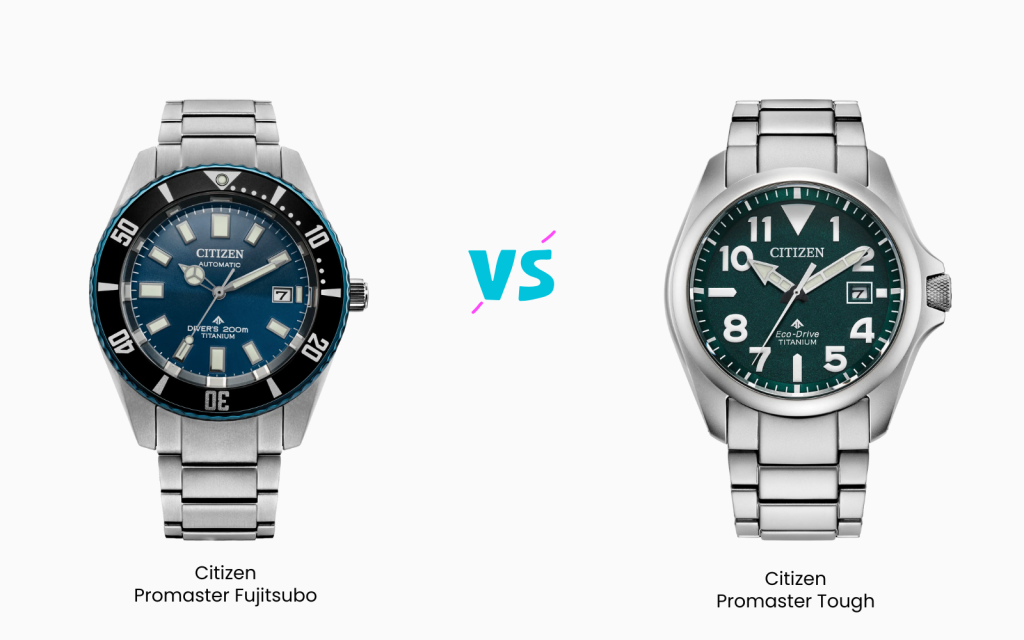
That’s why you hear people say things like, “This 36mm is all dial, so it wears more like a 38mm watch.”
Bauhaus brands like Junghans are known for making watches with large dials and thin bezels. Many dive watches, on the other hand, have small dials and thick bezels.
Just something to keep in mind!
Thanks for stopping by 🙏🏻
I hope this site helps you find the perfect watch (or three). If you have any questions about this site – or suggestions for me – please DM me @brockmcgoff on Instagram.
No matter what size wrist you have, be sure to wear a watch that you love, no matter how big it is or how much it cost.
Wear it well, and enjoy!